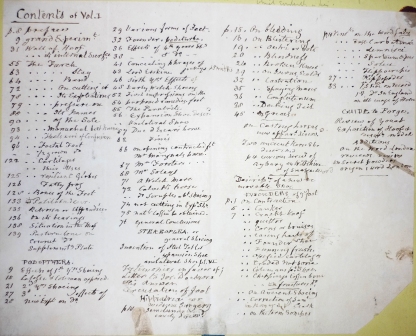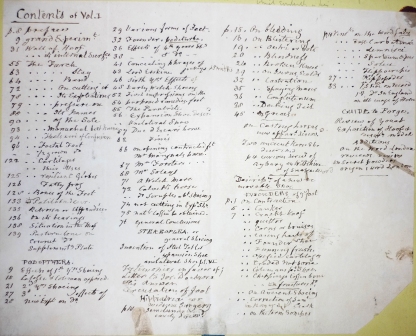What makes an item unique
At the recent Veterinary History Society meeting in Edinburgh I took part in a panel discussion with a number of archivists. One of the things we were asked to discuss was what we particularly liked about our collections.
I had given this some thought but hadn’t really decided what I would say as there are so many things I like: the window the material can provide into individuals lives; the beautiful illustrations, and the little things you come across by chance eg the tiny paper PDSA flag pinned to the corner of a letter from one of their supporters.
So what did I say? Well none of the above! What I chose to talk about was how I was always thrilled to find dedications and annotations which, whilst we may have multiple copies of a book in our collection, make that particular item unique.
I have been thinking about this since and thought I would share one of my favourite examples of this in an ordinary looking book labelled ‘Clark’s veterinary treatises Vol 1’.
The book is a collection of 34 works by Bracy Clark. Pasted into the inside is a handwritten sheet listing the contents. The first work listed is Hippodonomia, or the true structure, laws, and economy, of the horse’s foot also podophthora … which was written in 1829
Turning to pages 47-48 of the Podophthora we find Clark discussing the shuttle bone:
“[It is] sometimes fixed by this general contraction of parts, and is found adhering to the flexor tendon…No case of this sort had occurred to me… I have since ascertained that though such exist, they are comparatively cases of great rarity”.
At the foot of page 48 someone has added “I afterwards found it was more frequent than I at first believed at this period…”
The phraseology leads me to believe that this is Bracy Clark saying that he has changed his mind about the rarity of this problem.
Looking back to the front of the item there is a very faint pencil note above the contents list, in what I know to be Frederick Smith’s handwriting, which reads:
“I take it the list is in Bracy Clark’s handwriting …it goes with a footnote … which evidently is him”
So a volume of Clark’s works, of which we have several, is not just another one, it is – or would appear to be – unique in that Clark compiled it or at least owned it for long enough to list the contents and, more importantly, to note a development in his thinking.
As a final thought I wonder what libraries/archives would make of Frederick Smith and his pencil annotations these days? It is not unusual to find ‘evidence’ of his research for the Early history of veterinary literature in books in our collections. I expect nowadays he would at the very least be ‘discouraged’ but looking at them nearly a century later they do add something to the individual items!




